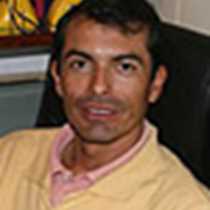Española Island
Today is the second day of our expedition and we woke up at Punta Suarez, which is one of the best places to see giant breaking waves. Española is the southern-most and oldest island in the archipelago, and therefore has had enough time to evolve its unique flora and fauna.
Toady we saw the Hood lava lizards, blue-footed and Nazca boobies, Galápagos hawks, Darwin finches and the mighty waved albatrosses. The albatrosses are coming to the end of their breeding season, and the chicks are almost completely fledged. It was nice to see the chicks moving around, and to watch the adults walking, in a very clumsy way, over to the cliff edge so they could take off without getting hurt.
After a snorkeling briefing, lunch and a short siesta, most of us went snorkeling. We saw diamond sting rays, and the sea lions played with us, which was really fun. Others went exploring in the glass-bottom boat, or kayaking.
We finished the afternoon exploring Gardner Bay, which has gorgeous white talcum powder sand. This is one of the Galápagos sea lions’ favorite spots in the archipelago and definitely one of the best sites to visit in Galápagos.
This evening National Geographic Photographer Mark Thiesen gave a presentation about photography and showed some very interesting and beautiful photos. Then we had dinner and we were all ready to go to bed.
Tomorrow will be another day in paradise.




